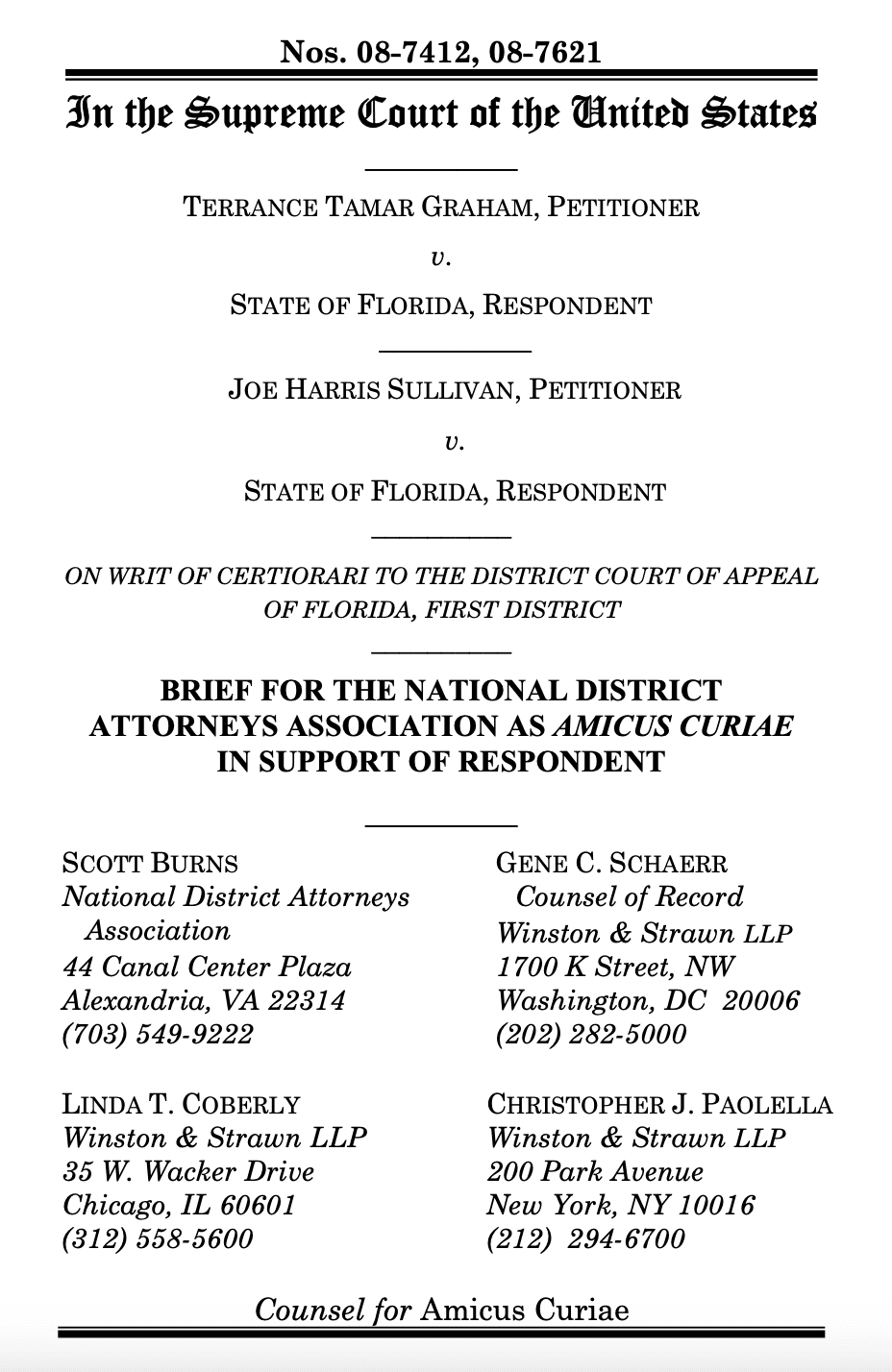
Summary of Argument
Petitioners would have this Court categorically declare unconstitutional the imposition of a sentence of life without parole on any juvenile offender, regardless of the severity of the crime, the individual offender’s maturity and culpability, and the juvenile’s criminal history. Essentially, they are asserting a facial challenge against the application of this punishment to juveniles as a class. As we demonstrate below in Part I, petitioners’ approach is foreclosed by this Court’s holding that a law may not be declared facially unconstitutional unless there is no set of circumstances under which the challenged law would be valid. See United States v. Salerno, 481 U.S. 739 (1987). Here, petitioners bear the burden of showing that there is no case in which the imposition of a life-without-parole sentence would be constitutionally valid against a juvenile. They cannot carry this burden.
Petitioners’ reliance on the categorical exclusions set forth in Roper v. Simmons, 543 U.S. 551 (2005), is inapposite. Roper was a death penalty case and, as this Court has held time and again, “death is different.” Given both the irrevocability and the ultimate severity of the death penalty, its imposition implicates prophylactic rules that do not apply to sentences of imprisonment—even imprisonment for life. Outside of capital punishment, this Court has never exempted a whole class of offenders from a particular category of punishment on the ground that it would be cruel and unusual. Because life imprisonment does not raise the same issues as a sentence of death, the Court should decline petitioners’ invitation to do so now.
Rather, this Court should apply its long-standing and well-established methodology for judging the constitutionality of a prison term: whether the sentence is “grossly disproportionate” to the individual crime. See Lockyer v. Andrade, 538 U.S. 63, 72 (2003). This methodology shuns categorical distinctions; rather, it looks to case-specific factors like the severity of the crime and the offender’s criminal history. While a court reviewing the proportionality of a non-capital sentence is under no constitutional obligation to take into consideration mitigating factors like the offender’s age, if youth has any place in the calculus, it is as one of many factors to be weighed, not as the source of an independently determinative bright-line rule. Applying these principles to Graham’s and Sullivan’s sentences, it is clear, as we show in Part II, that the imposition of life without parole was not grossly disproportionate in those cases. Both petitioners engaged in serious crimes of violence that posed a great threat to public safety. Each had a long record of prior offenses that suggested that rehabilitation was not an option. And each continued to commit violent crimes after receiving relatively lenient treatment for their prior offenses. Under these circumstances, a sentence of life without parole is not cruel and unusual punishment. And Graham’s and Sullivan’s cases well illustrate the wisdom of avoiding the categorical bar they seek.